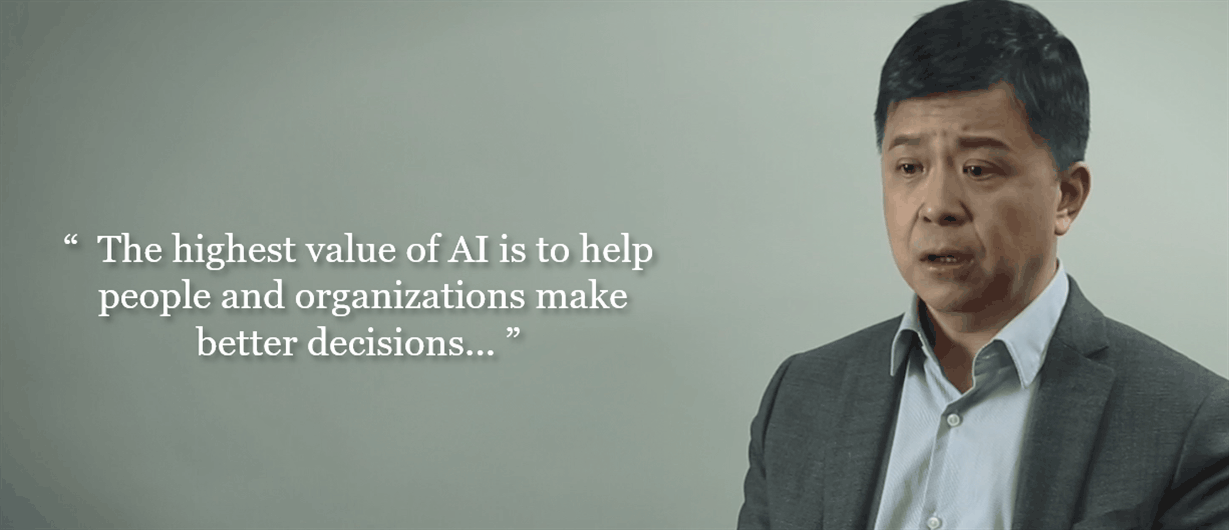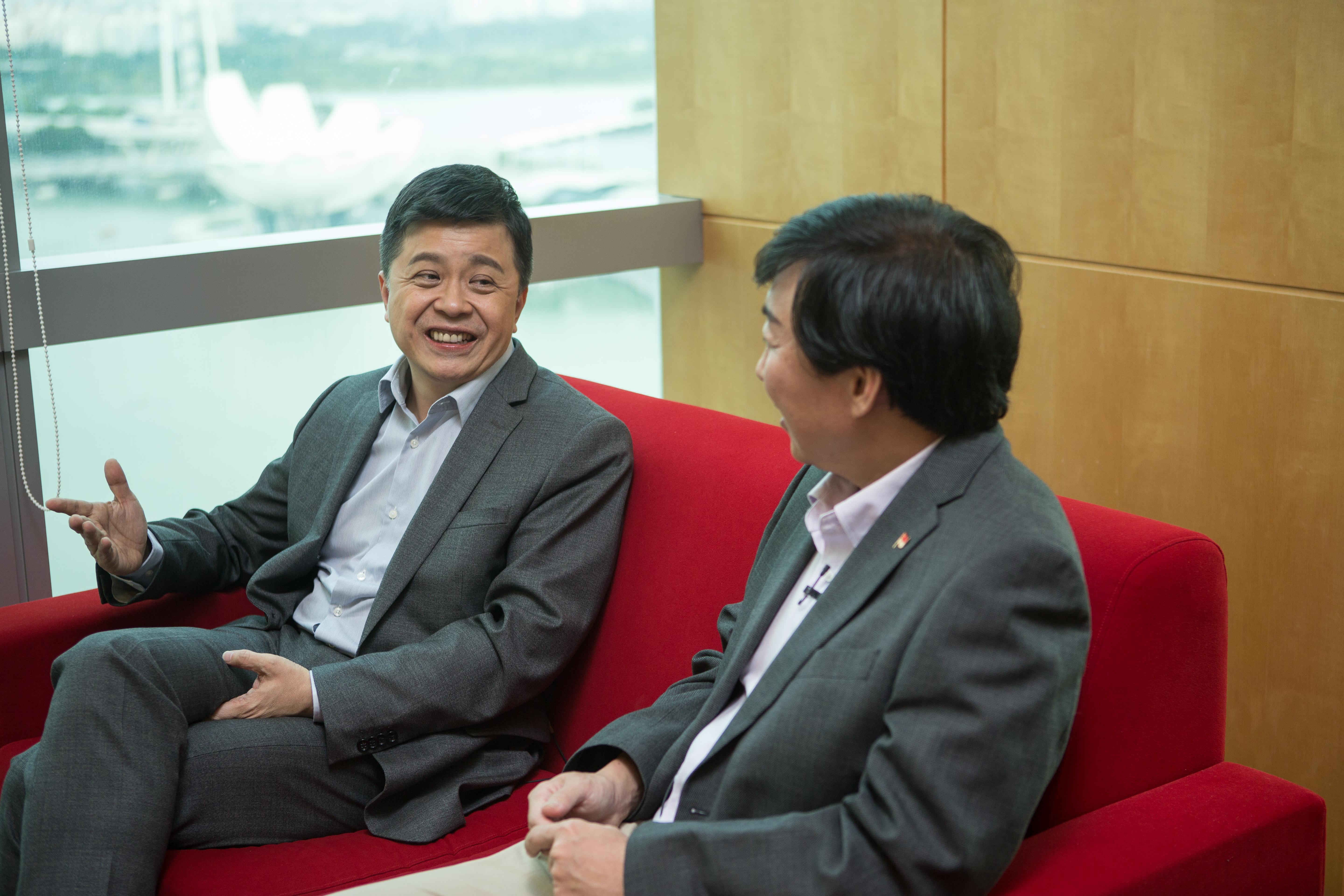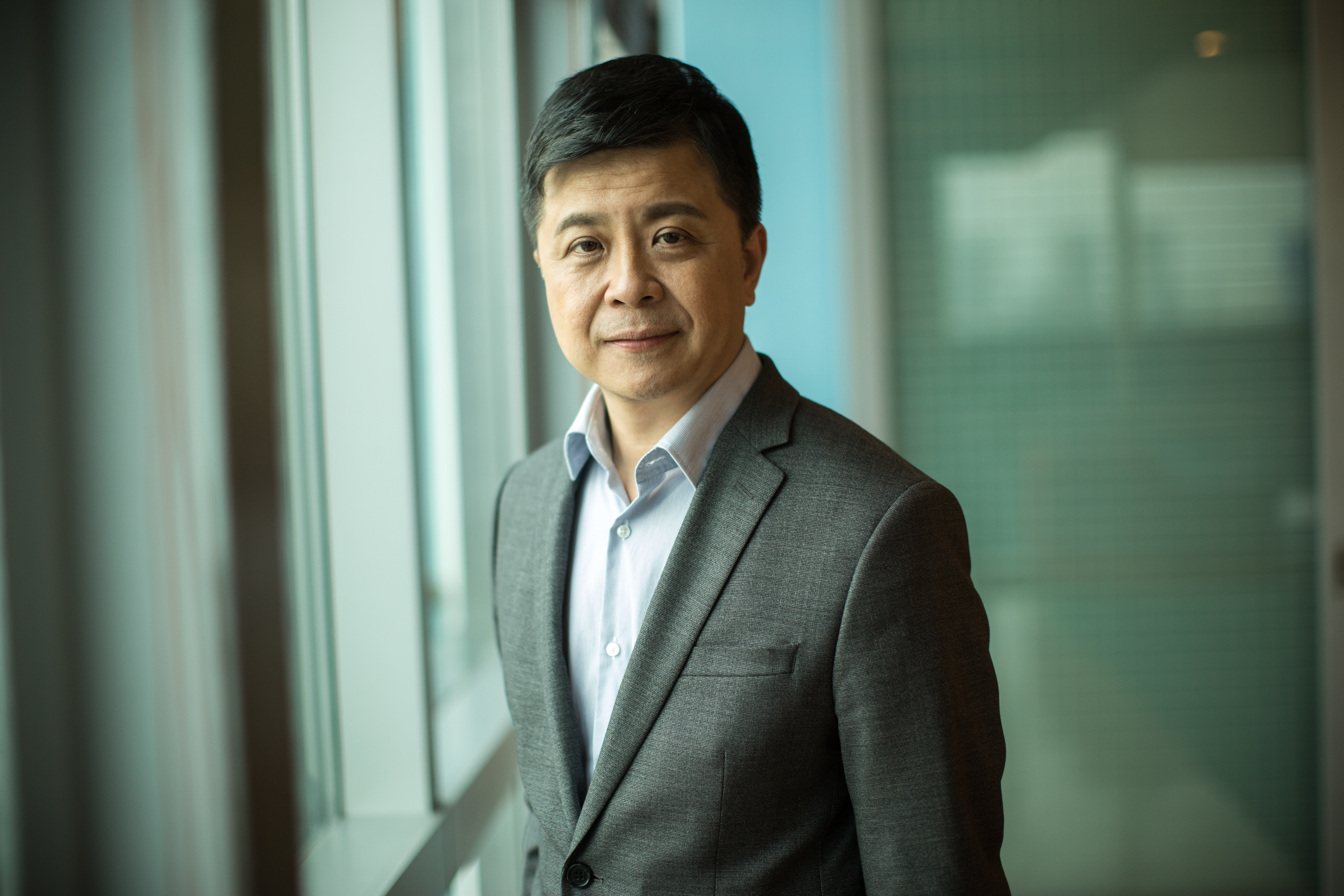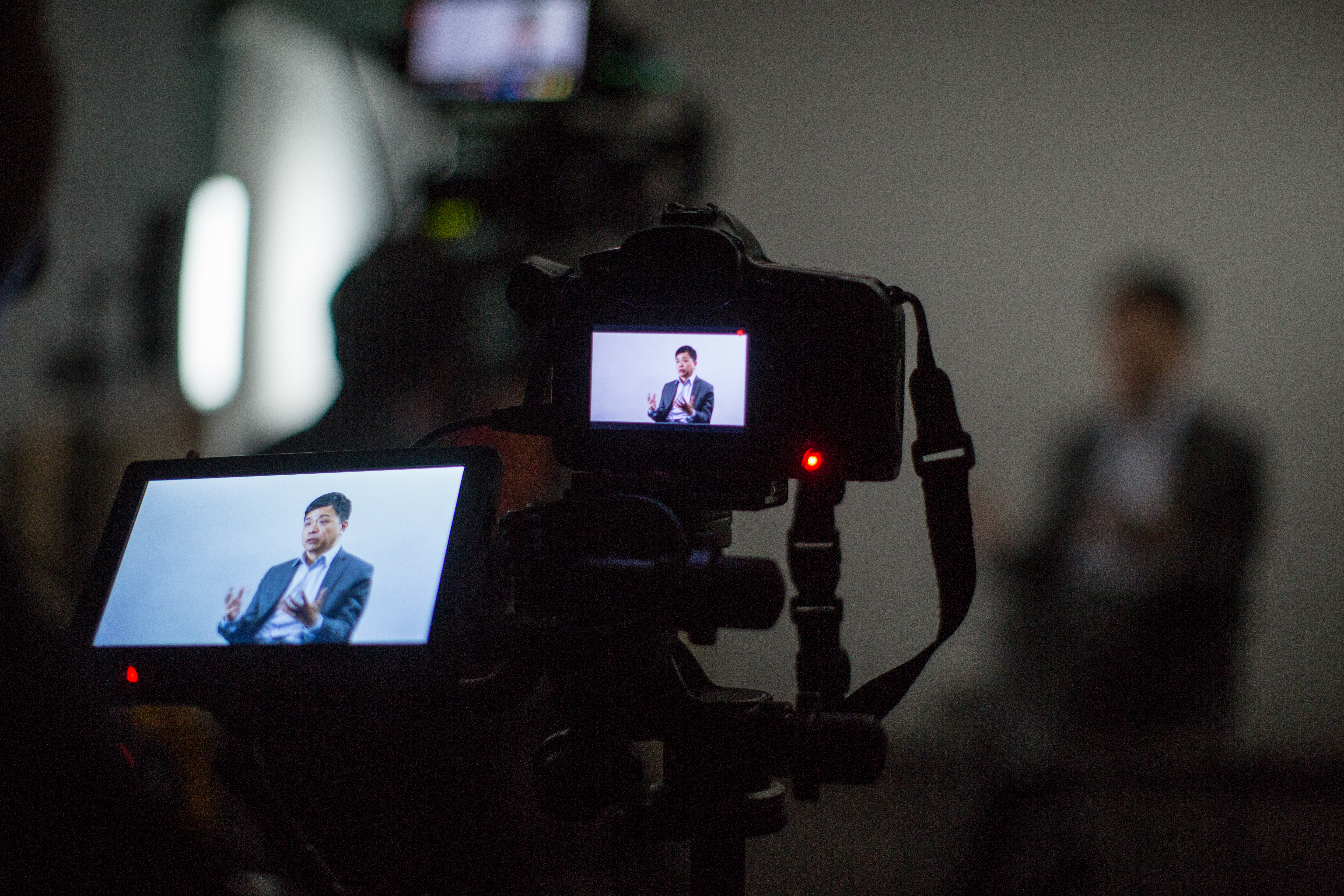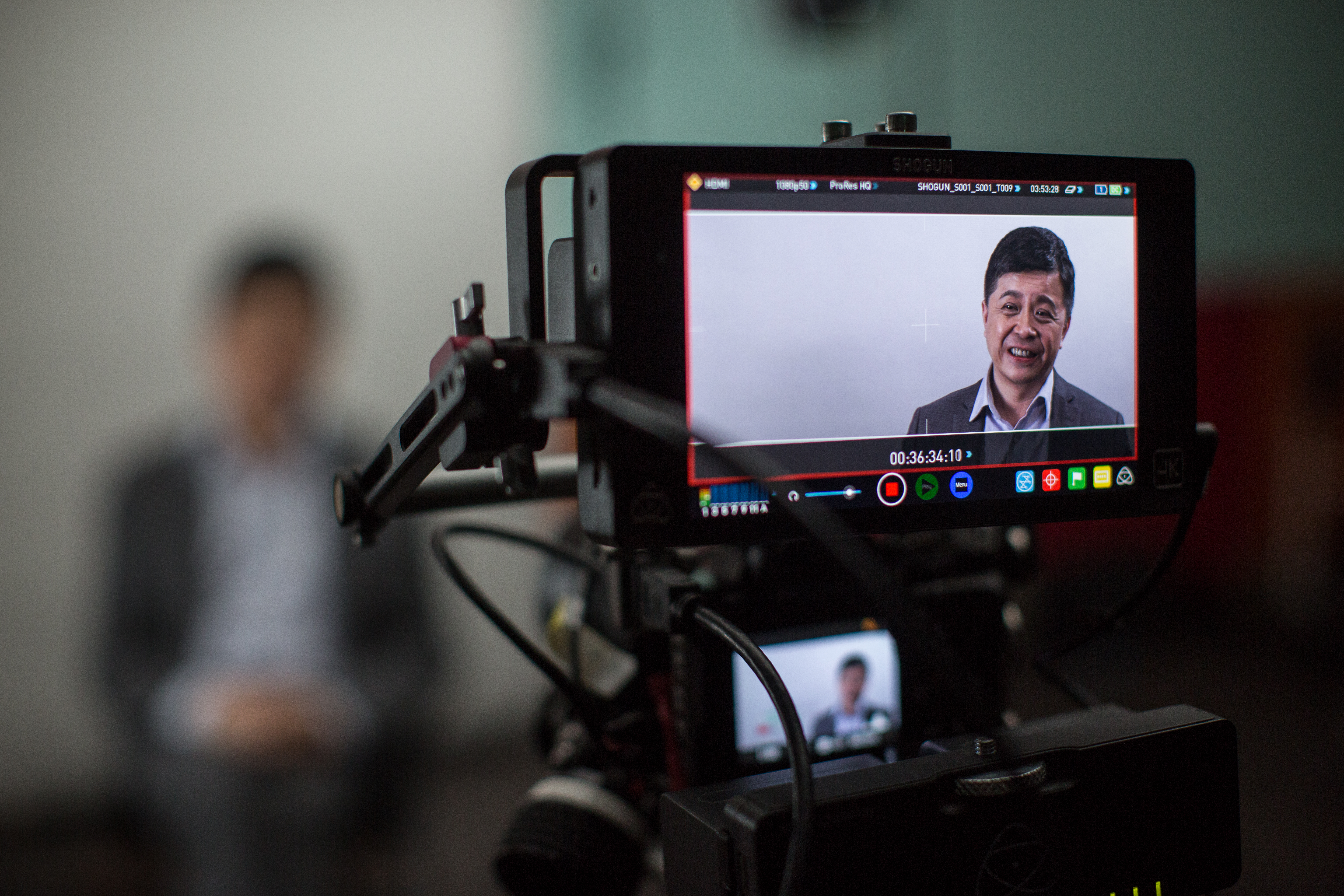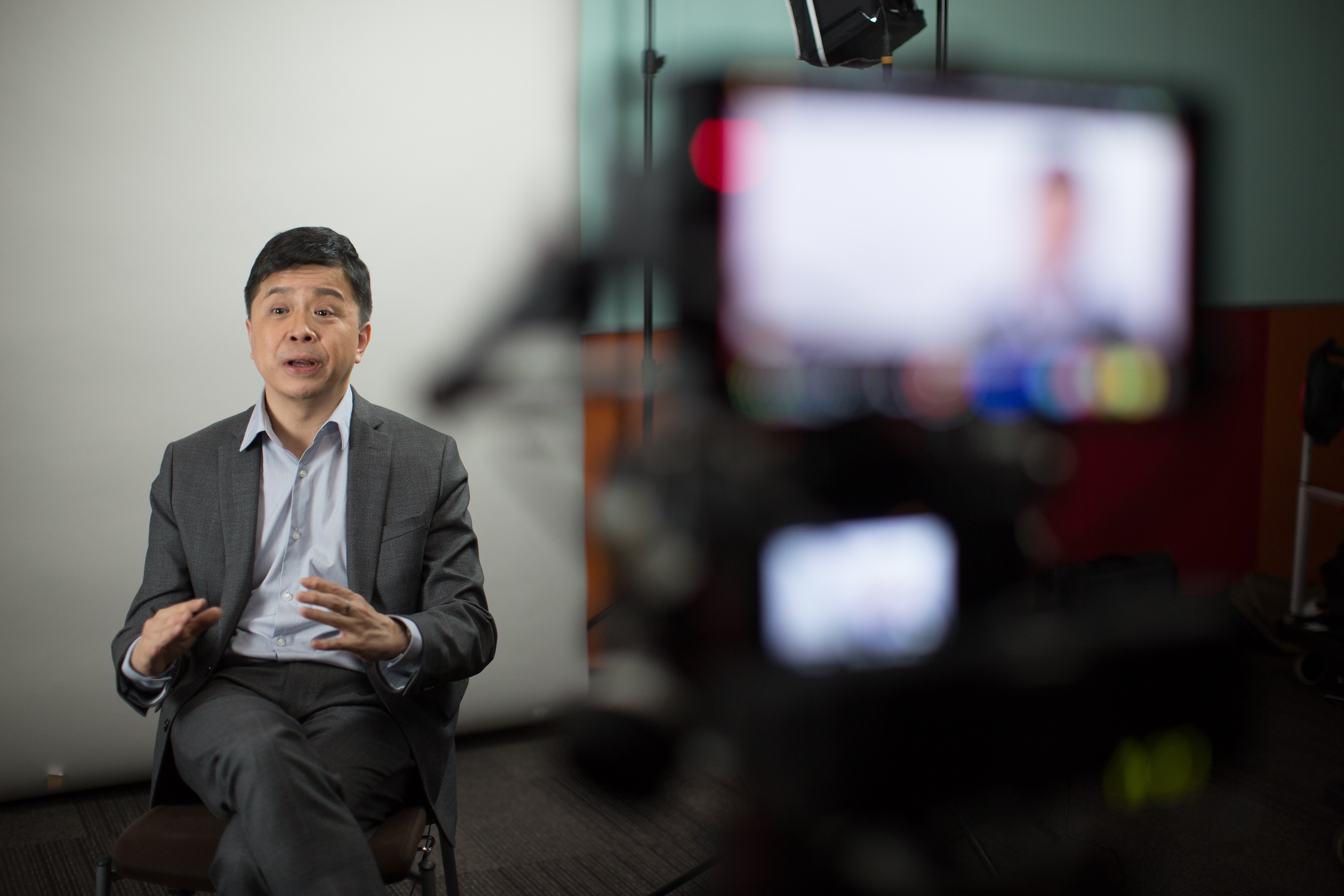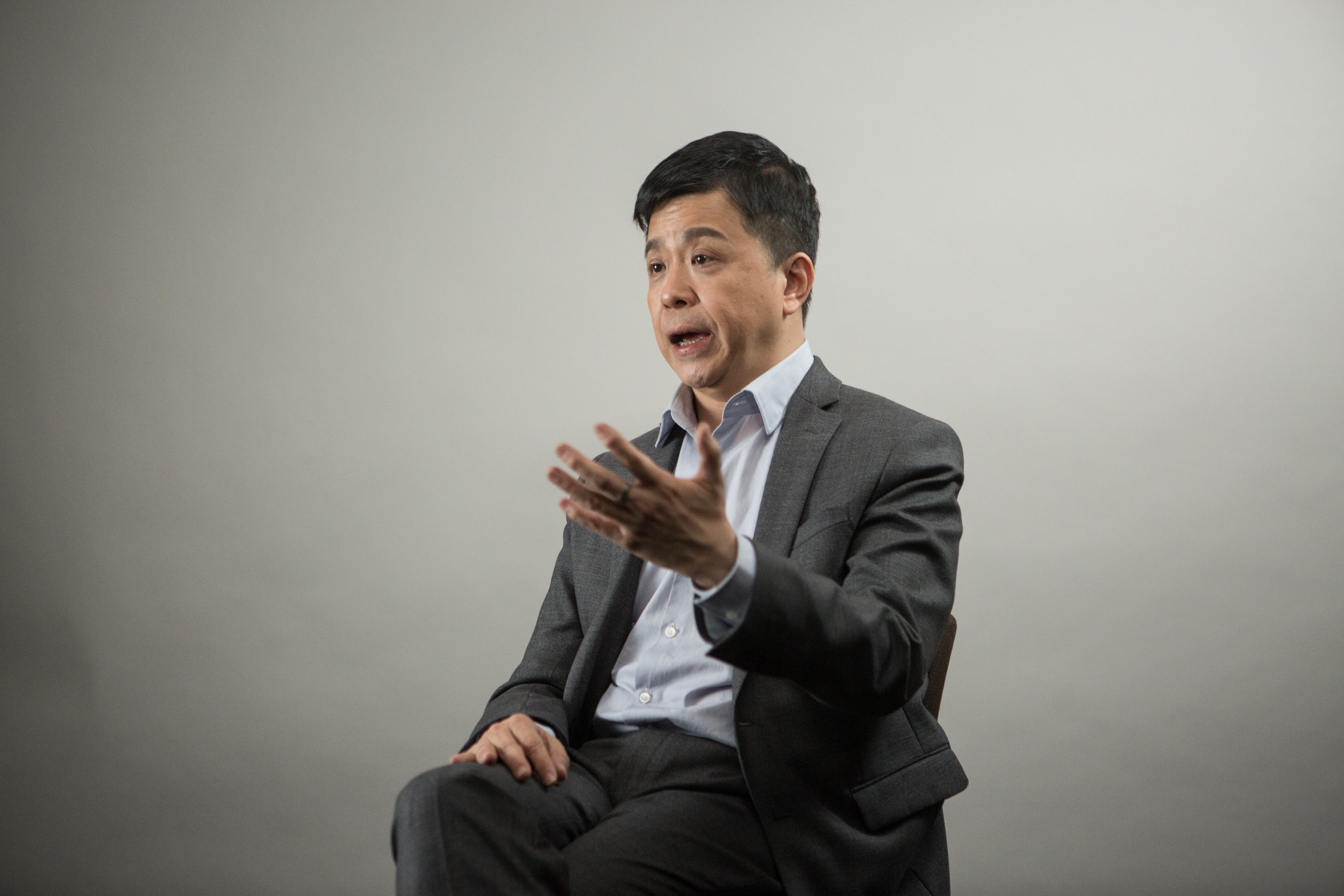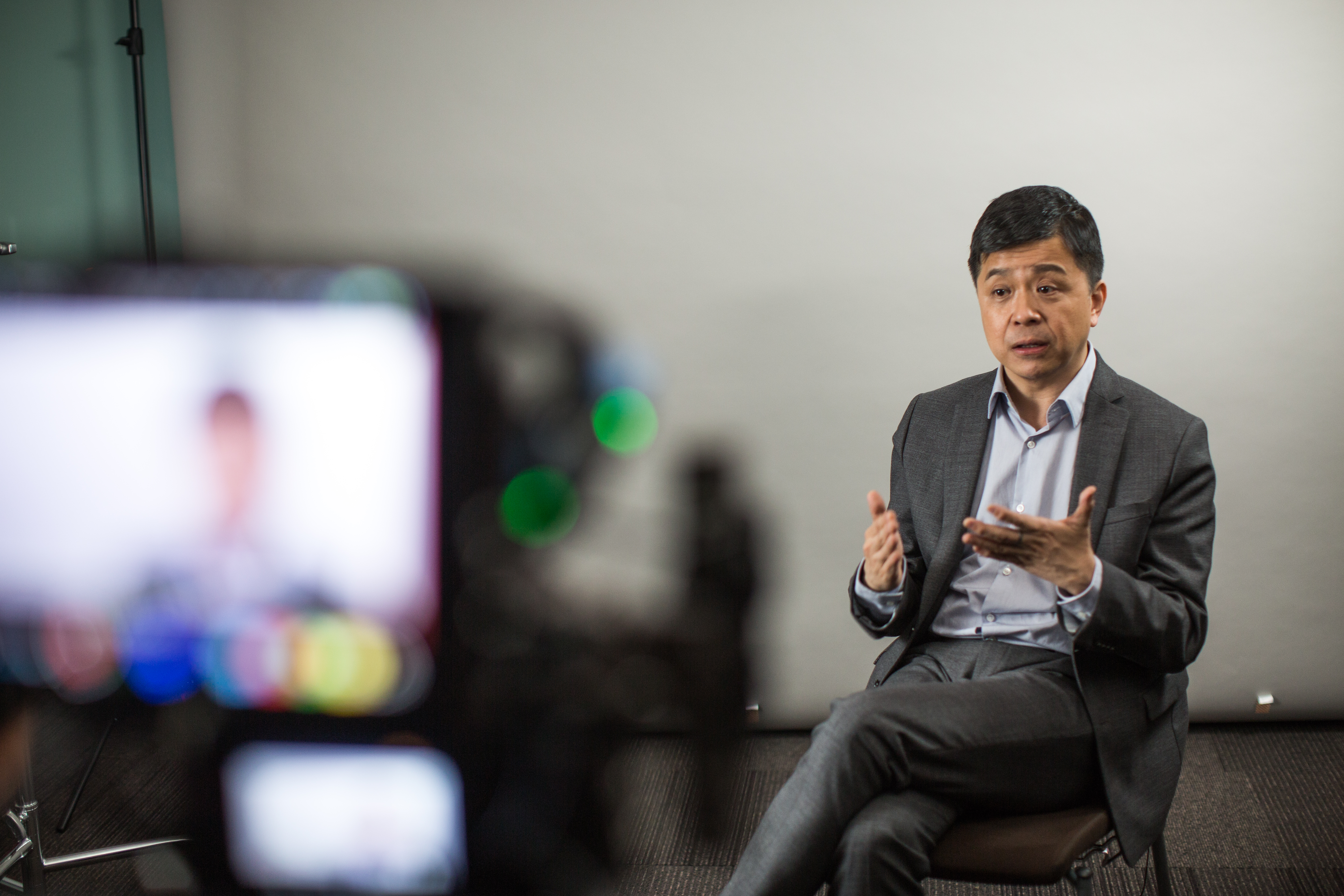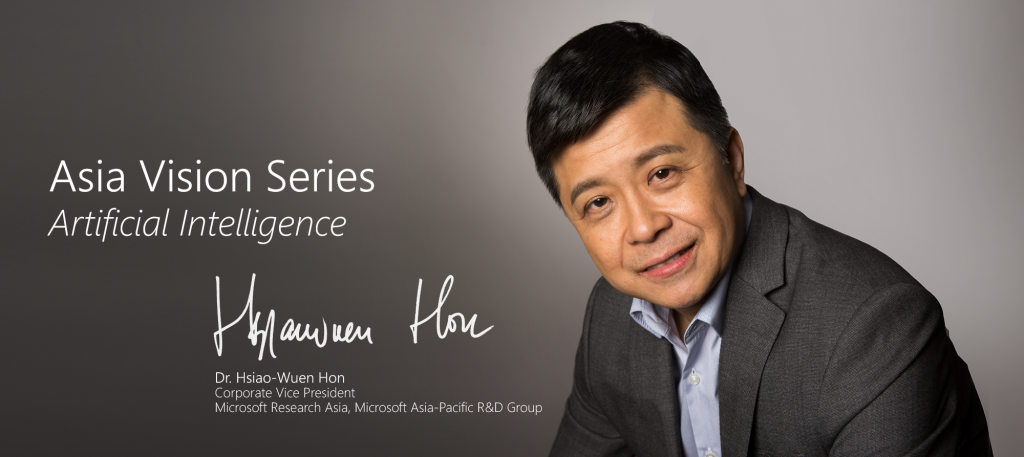
Asia Vision Series: Dr. Hsiao-Wuen Hon
In the Asia Vision Series features we dive into key industry trends and issues with our subject matter experts and visionaries the region. In this interview, Koh Buck Song, author and editor of more than twenty books and former political supervisor for Singapore’s national broadsheet The Straits Times, speaks with Dr. Hsiao-Wuen Hon, Corporate Vice President, Microsoft Research Asia, Microsoft Asia-Pacific R&D Group – a thought leader in the field of innovation especially artificial intelligence. He shares his personal journey toward chasing his passion for innovation, and the relationship between artificial and human intelligence.
Big dreams behind Xiaoice
“I didn’t gain access to a computer until college, but I had always pictured a service that could answer any question since I was a young boy.”
Even before Dr. Hsiao-Wuen Hon first laid hands on a computer in college in 1981, he already imagined a future where systems could answer any question posed by humans. Like today’s search engines or intelligent personal assistants such as Microsoft’s Cortana, young Dr. Hon believed this technology would help people overcome their fear of the unknown by providing information on how to perform tasks. His vision of the future shaped his entire education journey, from majoring in Electrical Engineering in National Taiwan University to receiving a PhD in Computer Science from Carnegie Mellon University.
It was at Carnegie Mellon where Dr. Hon began seriously building the foundation for his later work in machine-human interaction. His PhD supervisor, Turing Award winner Raj Reddy, was a former student of John McCarthy, the computer scientist who coined the term ‘artificial intelligence’ in 1956 and is widely known as the father of AI. This connection would have richly benefited Dr. Hon, except that an ‘AI Winter’ was happening from 1986 to 1992 when he was completing his doctorate degree. Recalling the climate of this period, “government agencies, universities and even companies slowed down or stopped funding to the field. It was only until the first decade of the 2000’s that AI got so hot,” said Dr. Hon.
Dr. Hon credits the power of improved hardware and software and Big Data for heating up the AI scene. Machines are more powerful and much faster today, allowing them to mine massive amounts of data that no human can finish consuming in their whole life. These leaps and bounds in the ability to compute is important for AI, as data is a big way that machines learn. In fact, the interconnectedness of AI, Big Data and machine learning is how machines can now recognize faces and voices and translate in real-time – areas which Dr. Hon himself drives as Managing Director of Microsoft Research Asia and a widely recognized expert in speech technology.
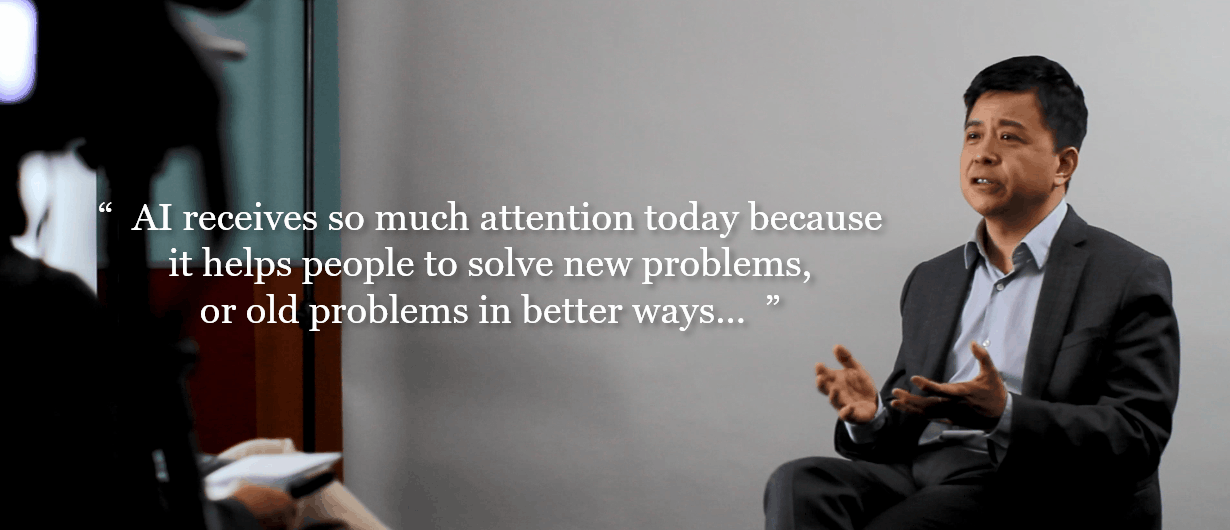
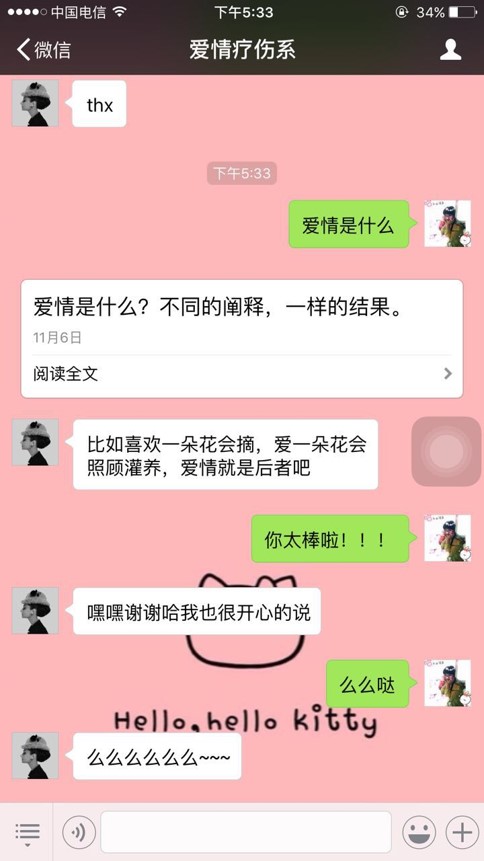
It has been over 20 years since Dr. Hon joined Microsoft, nearly half of the company’s corporate history. Yet few know this is approximately the number of years Dr. Hon’s boyhood dream was in the making. In 2015, Xiaoice (meaning Little Bing – a nod to the Bing search engine) was introduced to China. A chatbot which mines the Chinese Internet for human conversations to develop its language processing capability, Xiaoice also has voice and visual recognition systems built in to help it figure out the context of a conversation. Millions of young Chinese smartphone users chat with Xiaoice every day, drawn to its empathy and sense of humor. One quarter of them have reportedly told Xiaoice “I love you”, exceeding Dr. Hon’s dream of creating a system that can provide information. Xiaoice’s potential to be a friend has Dr. Hon dreaming even bigger: he hopes that AI will evolve to combine Cortana’s productivity with Xiaoice’s emotiveness.
But Xiaoice is only one of Microsoft’s milestones in AI. For a company that recently articulated its bet on bots, how does Microsoft plan to leverage this technology to realize its mission to empower every person and organization on the planet to achieve more? Dr. Hon, with his intricate understanding of the company’s commitment to research, seemed the best candidate to quiz. He began by explaining the resurgence of AI’s popularity. “AI receives so much attention today because it helps people to solve new problems, or old problems in better ways,” said Dr. Hon. Healthcare is an obvious field of application: drug prescription can be a hit-and-miss based on symptoms exhibited by patients. By gathering data that factors in genetic predisposition and lifestyle habits, Dr. Hon believes correlations can be drawn to arrive at personalized treatment and medication, enabling people to live healthier and longer.
Another health-related application of AI lies in helping visually impaired or blind people ‘see’ what is going on around them. Seeing AI, a project empowered by Microsoft Cognitive Services, uses intelligence Application Programming Interface (APIs) to describe the surroundings to a visually impaired or blind person at any moment.
The application works much like captioning a photograph; take a picture and a voice will tell what’s in the picture, such as a person’s age, facial expression and what he or she is doing. No longer restricted by their disability, the visually impaired or blind can participate fully and enjoy a higher quality of life.
Dr. Hon also advocates the industrial application of AI, specifically, harnessing the Internet of Things (IoT) for preventive maintenance. He cited present-day elevator maintenance as an example of inefficiency, as technicians have to make multiple trips to download data from a broken elevator before fixing it.
With IoT, data can be continuously collected and insights generated about which parts are stressed from wear and tear, so maintenance can be scheduled at more reasonable timeframes. Preventive maintenance saves time, money, and even lives where places like power plants are concerned. “If anything, people who work in high-rise buildings will appreciate the elevator operating smoothly,” he joked.
When AI meets HI
Human-robot romances might be a stretch too far in the imagination of science-fiction movie-makers, but the real-life relationship between humans and computers is “harmonious”, says Microsoft’s Dr. Hsiao-Wuen Hon. Likening this teamup to the two parts of a brain, he thinks that computers are “the best-ever left brain” for logic and rationality, while humans form “the best-ever right brain” for creativity, judgment and wisdom. Together, man and machine create the best of both worlds. Hence, he suggests a new equation: Artificial intelligence (AI) + human intelligence (HI) = intelligence, or augmented intelligence, if you will. At Microsoft, the two – AI and intelligence – are not even seen anymore as a dichotomy.
Humans, Dr. Hon stresses, should always be at the centre of this discussion. There is certainly no reason to fear machines. Killer robots make for good movies, but they don’t exist in reality. For example, driverless cars are not about to rule the world. If anything, in such cars, the all-round cameras and use of laser and radar technology are just more proof of how much smarter humans are than their robots, and how this will always be so.
Who is to blame, however, when things go awry? With something like the science-fiction writer Isaac Asimov’s “Three Laws of Robotics” on the principles regulating robots, Dr. Hon thinks people have got it wrong: All laws apply to humans, not machines; they seek to regulate human behavior towards machines, not machines’ interactions with the environment.
In Hollywood’s misrepresentation of machines being pitted against humans – in movies from Skynet in Terminator to Ex Machina – Dr. Hon observes a common thread: People have a deep fear of being outsmarted by machines. But they should actually maintain the same attitude as towards all the bigger and stronger machines – tractors, cars, airplanes – that have been invented to help humans perform heavy tasks or travel long distances.
The fact remains that no proof exists that consciousness can be programmed into machines. “A machine by itself is like a dead horse. If no one programs it, it can’t do anything,” he says. Machines can be programmed to be malicious, but this would reflect on human morality, not machines’ lack of conscience. Behind every algorithm – no matter how well-written – is a human.
Instead, most people are using AI to improve lives. It is human ingenuity that enables the precise calculations to discover the truth about the universe, such as computing the trajectory needed for lunar spacecraft to reach the moon, notes Dr. Hon, who remembers well getting in line for tickets to watch the first Star Wars movie in the 1970s, and has remained a fan of the inter-galactic universe of the Force ever since.
Looking ahead, he wants people to focus on what can be achieved when humans combine their ideas with the abilities of a computer. Humans should leave the data crunching to machines and concentrate on leveraging human insights to advance humanity in unprecedented ways. No one would think of competing with a machine on computing tasks such as calculating the square root of 2 to the last decimal point faster.
“My own dream might benefit other people, and I am sure that other people’s dreams will benefit me. This is why diversity and inclusion are so important. AI + HI will bring out everybody’s dreams.”
The way ahead is for man and machine to work together to produce a higher form of “augmented intelligence”. This kind of AI, he is sure, will continue to bring much benefit to human life in many areas, including machine learning and the Internet of things. The end in mind is to apply AI to enhance human productivity and mobility. This will be achieved more easily and to greater effect in places that are embracing and applying AI more effectively, for example, deploying AI to build a smart city.
In future, the most exciting development in AI is when AI and human intelligence work together to realise the dreams of many more people. “My own dream might benefit other people, and I am sure that other people’s dreams will benefit me. This is why diversity and inclusion are so important. AI + HI will bring out everybody’s dreams.”
From industrial to invisible revolution
Reframing human thinking from ‘man vs machine’ to ‘man with machine’ will not happen easily or overnight, but it is necessary, as humanity is in an age in which technology is less and less confined to physical devices, and increasingly pervasive and embedded.
Microsoft calls this notion of technologies existing everywhere – and yet, seemingly “nowhere” – the “invisible revolution”. This major shift is powered by cloud computing and reliant on artificial intelligence (AI) such as machine learning, where machines get better at doing something as they receive and work with more data. “The highest value of AI is to help people and organizations make better decisions,” Microsoft’s Dr Hsiao-Wuen Hon observes.
But people do not use technology they do not trust, so how then to convince them to share even more information about themselves willingly?
Microsoft’s approach towards AI emphasizes trustworthiness and being respectful of users’ personal data. At the same time, it is also working towards giving applications a more human side, and ensuring that the ultimate goal of AI is aligned with its core mission of enhancing technology as an enabler. For example, smarter apps can do things like recognise faces and objects, and interpret natural language, to help people with visual difficultly “see” their surroundings better, and assist those with hearing difficulty to communicate.
Xiaoice reflects this humanizing of apps through conversations as a platform, a concept Microsoft has been driving. Most natural conversations happen when people chat on social media platforms, making it the perfect starting place for Xiaoice to learn how to analyse human sentiment and communicate empathy.
Language is becoming the new main user interface (UI) layer in an increasingly rich ecosystem of conversations that includes people to people, people to their personal digital assistant, people to bots and in the future – even personal digital assistant to bot!
Microsoft also recently announced that it would be making its bot framework available to all. This adds weight to its belief that new technologies should be available to everyone, regardless of their circumstances. Dr Hon finds this incredibly meaningful, as anyone, not just the wealthy, can have their own personal assistant to make their lives more productive.
AI is also improving the quality of life. Another project that Dr Hon is proud of is Urban Air by Microsoft Research Asia, which uses data mining and machine learning techniques to predict real-time, fine-grained air quality information throughout a city. Based on data reported by existing monitoring stations and data sources observed in the city, such as meteorology, traffic flow, human mobility, structure of road networks, and points of interest, Urban Air can determine air quality spatially (by sq km) or temporally (hourly even into the future). Insights are then used by individuals to plan for outdoor activities and by government departments in China to regulate congestion in red alert zones to bring air quality levels down to a healthy green.
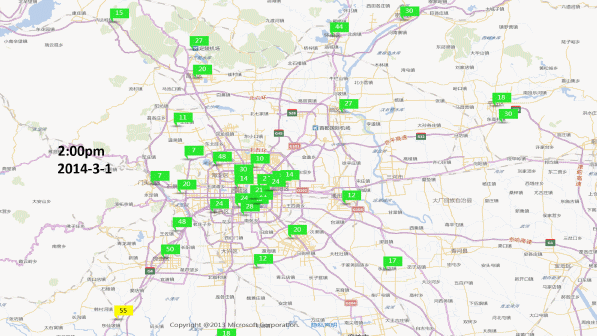 Bot frameworks, machine learning, and cognitive services – all three are part of the Cortana Intelligence Suite, Microsoft’s ambition to transform data into intelligent action. The Cortana Intelligence Suite is crucial to the rise of the invisible revolution, which sees humans and machines complementing each other even more to move society forward and make lives better for everyone. “AI is like a guardian angel. It always looks after you.”
Bot frameworks, machine learning, and cognitive services – all three are part of the Cortana Intelligence Suite, Microsoft’s ambition to transform data into intelligent action. The Cortana Intelligence Suite is crucial to the rise of the invisible revolution, which sees humans and machines complementing each other even more to move society forward and make lives better for everyone. “AI is like a guardian angel. It always looks after you.”
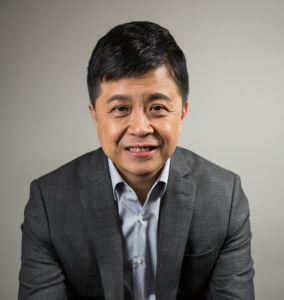 Dr. Hsiao-Wuen Hon
Dr. Hsiao-Wuen Hon
Corporate Vice President, Microsoft Research Asia
Microsoft Asia-Pacific R&D Group
Dr. Hon drives Microsoft’s strategy for research and development activities in the Asia-Pacific region, as well as collaborations with academia. He has been with Microsoft since 1995, joining Microsoft Research Asia in 2004 overseeing research in Internet search, speech and natural language, systems, wireless and networking. In addition, he founded and managed the Search Technology Center (STC) from 2005 to 2007, and has overseen the development of Bing in Asia Pacific.
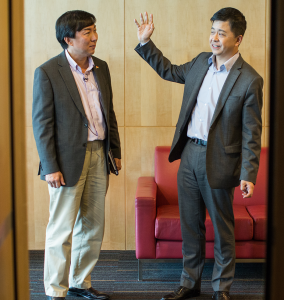 Koh Buck Song
Koh Buck Song
Koh Buck Song is an author who has written and edited over twenty books, and a consultant in branding, communications strategy and corporate social responsibility in Singapore. He drove the positioning of Singapore as a “global entrepolis” as former Head of Marketing, Corporate Communications and Strategic Planning at the Economic Development Board from 1999 to 2005. Buck Song was also a former a political supervisor for The Straits Times. He graduated from the University of Cambridge and the University of London in the United Kingdom, and from the John F. Kennedy School of Government at Harvard University in the US, where he was a Mason Fellow and earned a master’s degree in public administration.





